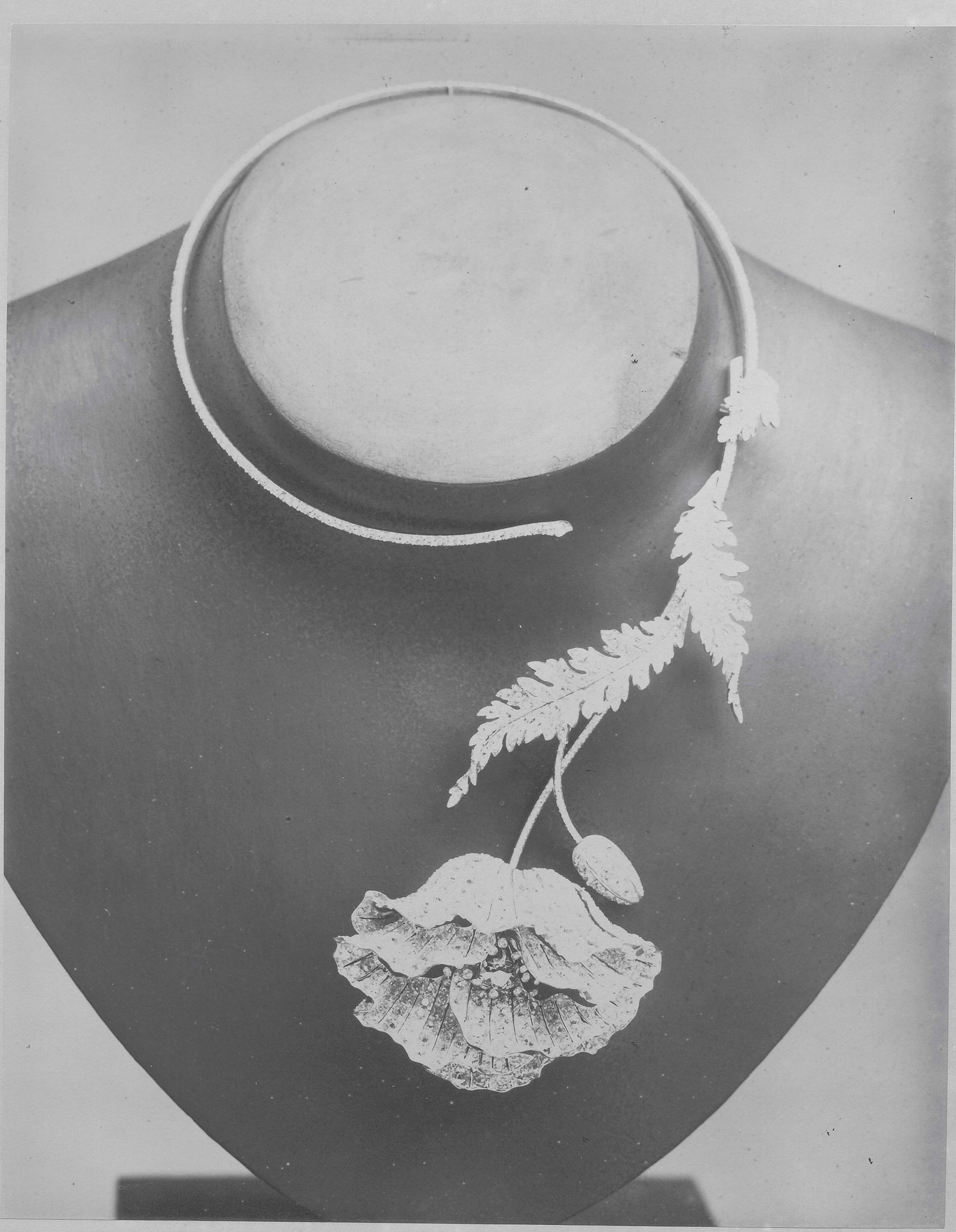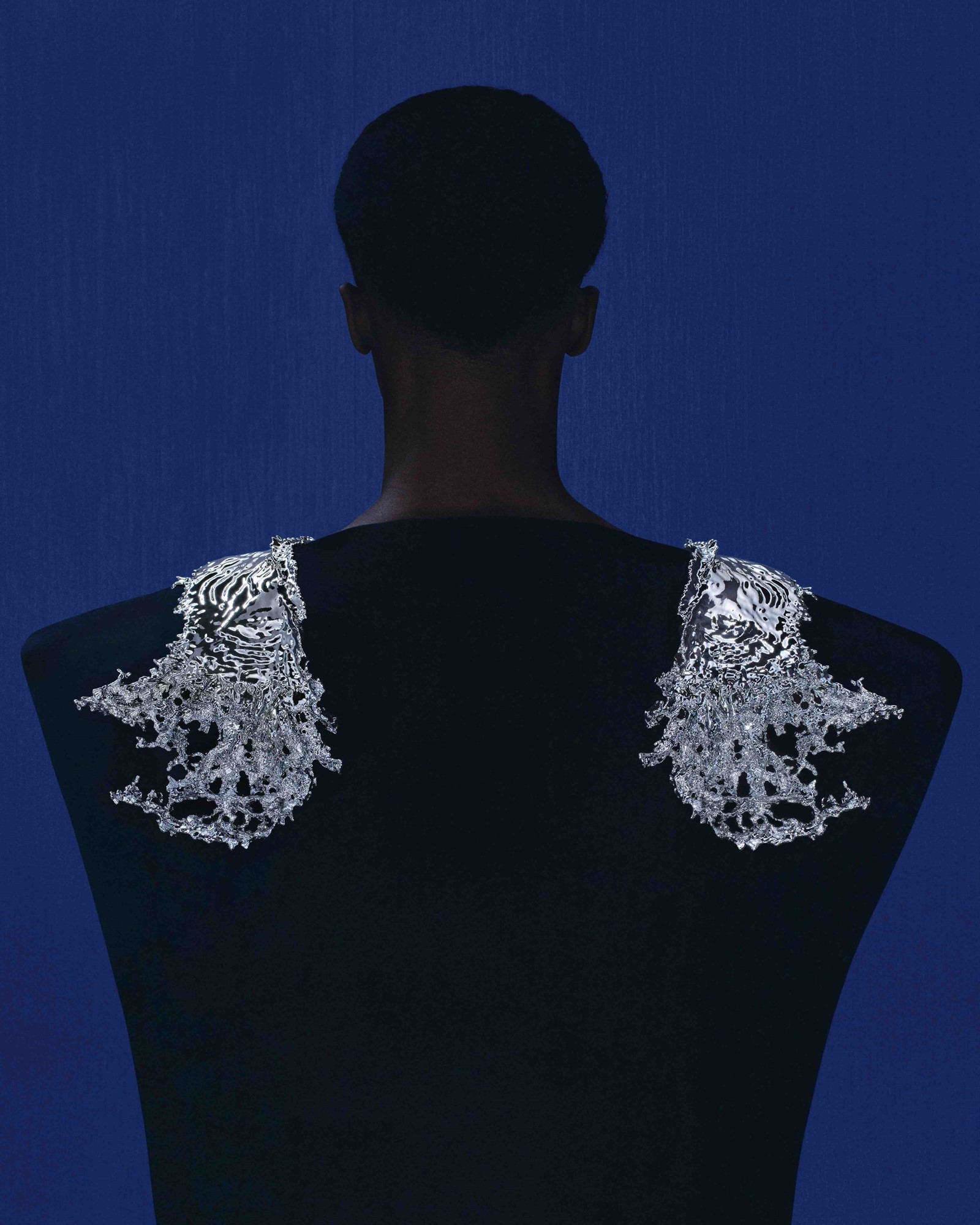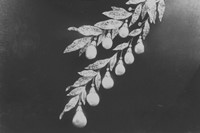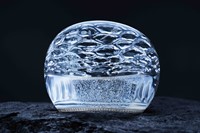Claire Choisne, creative director of the jewellery house Boucheron, is ensconced in a zhuzhy Parisian salon above the house’s historic boutique, filled with tens of millions of pounds (maybe more) of gems – mainly diamonds, but a few others. Yet she’s showing me a pair of diamond-paved ‘shoulder brooches’ (they’re a thing) otherwise shaped from aluminium (because it’s eight times lighter than gold) and palladium, and attached to your clothes with magnets, a bit like clipping a shopping-list onto your fridge, but with a far bigger price-tag.
Their shape – inspired by crashing waves off the Icelandic coast – was devised on the 3-D software Blender, usually used for render digital avatars in computer games. They perch on the wearer’s back – suitable for any gender – where they look like wings, and although they look like they’ve been splashed into place, they took 980 hours to make. They’re incredible – not only bold and contemporary, but kind of unlike any other jewellery I’ve ever seen, let alone one bearing the imprimatur of one of the most storied jewellery names on the Place Vendôme, founded in 1858 and, actually, the first great jeweller to move there in 1893. But, as Choisne says, “There is no better way to honour high jewellery than to make it free and wearable – not locked away in boxes.”
Choisne is quite storied herself. She attended the Haute École de Joaillerie in Paris – the oldest jewellery school in the world – established by the city’s specialists in the 19th century. She graduated in 1997, receiving the Jacques Lenfant prize (awarded to the best three jewellery students in France). She designed under her own name, and for a roster of the Place Vendôme greats as head of Lorenz Baümer’s design studio, before moving to Boucheron in 2011.
Despite that training, and from the very start of her tenure, Choisne has thought outside the box, in both senses of the term. She wants to create pieces that challenge the conventions and restrictions of jewellery, but also ones that people can wear. Hence the lightness of aluminium, the ease of magnets, and her use of unconventional materials like great hunks of rock crystal that give her jewellery a believability (the same size stone in precious gems would require a phalanx of bodyguards for you to leave the house).
Choisne’s approach has marked Boucheron out as one of the most forward-thinking houses operating in the high jewellery sphere. Yet she perceives these rebellious pieces as part of Boucheron’s lineage – especially the innovation of its namesake founder, Frédéric Boucheron – rather than butting against it. Indeed, her high jewellery creations each year fall into two categories: each January, she presents a collection themed around the notion of “Histoire de Style”, unearthing and reinterpreting styles from Boucheron’s extensive archives, while her July collection is a “Carte Blanche” for creative expression, an exploration to invent future archive pieces.
“Like [Frédéric Boucheron], I like to push back the boundaries of high jewellery, as he did with the ‘Question Mark’ necklace, which is much more than a piece of jewellery – it is an ode to the freedom to wear, a look at society and a response to help it evolve” – Claire Choisne

Last year, the inspiration was the Memphis design movement, with Masanori Umeda’s 1981 boxing-ring plonked in Boucheron’s salons (incidentally, in the 1980s Karl Lagerfeld had a similarly incongruous one in his Monégasque apartment) and a collection inspired by maxed-out maximalism; this time it was a trip to Iceland that inspired a collection named Or Bleu and dedicated to the preciousness of water, with pieces resembling everything from stately glaciers to trickles of spring water seeping through rock faces. One series, in diamonds and pearls, resembles a flow of frozen water trickling from hair adornment, through earring to ring. Beats a parure of matching necklaces and earrings.
For Choisne, however, even the mould-breaking carte blanche ranges are all linked to the house history. “I worked for many jewellers before joining Boucheron,” she says. “I have always been drawn to Frédéric Boucheron, who I think was the most visionary. Like him, I like to push back the boundaries of high jewellery, as he did with the ‘Question Mark’ necklace, which is much more than a piece of jewellery – it is an ode to the freedom to wear, a look at society and a response to help it evolve.” That necklace, designed in 1879 – and revisited often by designers, of course including Choisne – was the first without a clasp that a woman could put on herself.
Against the ‘gilded cage’ of 19th-century etiquette, this was a startling act of freedom and agency in an era when a retinue of servants was not a luxury but, for wealthy women, a daily necessity to simply dress. If we’re giving that a feminist reading, there’s a fitting echo in Boucheron’s make-up today – with Choisne and CEO Hélène Poulit-Duquesne, they are a rare all-female creative lead at a luxury company. “He wanted to liberate women by creating wearable jewellery,” Choisne says, of Frédéric Boucheron. In terms of revolution, his ‘question mark’ necklace was as bold a gesture as Choisne’s magnets.
“[Frédéric Boucheron] wanted to liberate women by creating wearable jewellery” – Claire Choisne

FYI – she’s used those before. Last year, she proposed bejewelled ‘pockets’, fun gestures towards fashion items in staggering plays of fine jewels and precious metals, like a pinstripe of white diamonds set in onyx, mounted on titanium. To naysayers, the magnets are strong enough to hold an iPhone. That seems modern, but again has a historical connection for her – Frédéric’s father Louis began his career in Paris as a mercer and draper, a supplier of materials to the great couture houses of the time.
“He grew up surrounded by rare precious materials, such as silk and lace,” Choisne says. “This environment influenced his approach to high jewellery: Frédéric Boucheron had a taste for textiles, as well as for the fashion of the times. Within the archives of the Maison, there are numerous pieces that draw inspiration from the world of couture.” Accordingly, Choisne herself plays with reinterpretations of ribbons, knots, tassels, pom-poms, a big bow in her ‘More is More’ collection, and military ribbons for this January’s The Power of Couture collection, where minute bevelled fragments of rock crystal approximated grosgrain ribs.
Materiality is significant to Choisne – alongside pieces pretending to be what they are not, she challenges our perception of the precious, using bio-acetate, glass, burnt wood and even a new material called Cofalit®, resembling onyx but created from industrial waste and usually used for motorway embankments. “Our aim is to demonstrate that certain materials, not considered noble at first sight, are actually just as precious as gold and diamonds,” Choisne says. It’s an assertion that makes her designs not just inventive, but a kind of modern alchemy. They’re certainly unlike anything else on the Place Vendôme, which, in a crowded marketplace, makes them worth their weight in gold.






